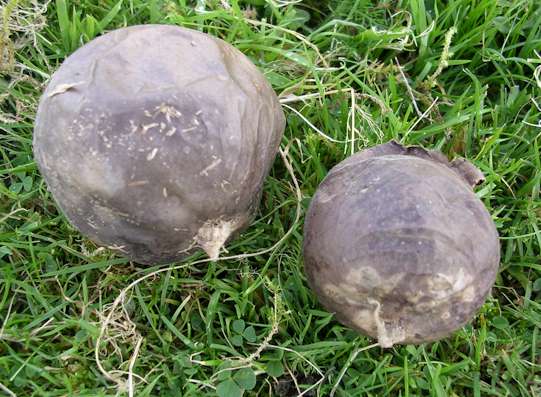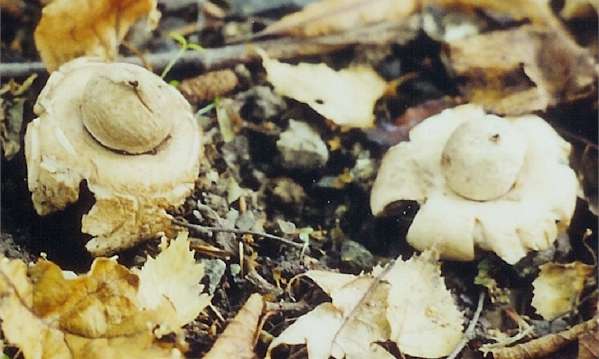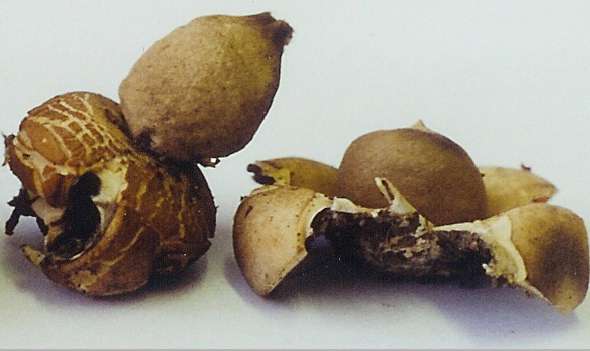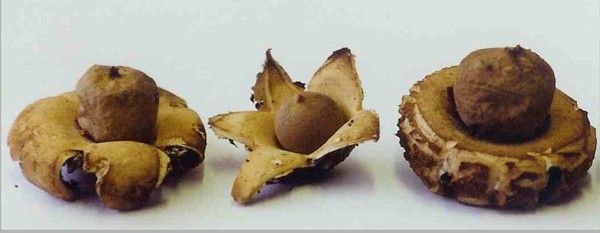..
PROFILES OF FUNGI: BOVISTA AND GEASTRUM SPECIES Bovista spp., such as the lead-coloured Bovista plumbea (Figs 1 and 2), grow in pastures and grasslands. Initially they are white but as they near maturity the outer casing falls away, leaving a thin-membraned fruitbody that ruptures at the apex, revealing the spores. These fruitbodies are initially attached to the underground substrate by a single, thick mycelial cord, but soon break free and roll across the grassland, carried by wind and thereby disperse their spores.
Fig 1. Fruitbodies of Bovista plumbea seen from above. [© Jim Deacon]
Fig 2. Bovista plumbea from below. Note the attachment of the fruitbody to a single, thick, tapering cord at its base. [© Jim Deacon] Geastrum species, commonly known as "earthstars", behave in a different way from all the other puffball-like fungi. They are found amongst leaf litter in deciduous woodland, and there is some evidence that they might form mycorrhizal associations with tree roots, rather than growing as saprotrophs like the puffballs. Although earthstars are similar to puffballs (both being classified as members of the order Lycoperdales in the Basidiomycota) they show an interesting difference in their development. As shown in Figs 3 and 4 below, the earthstars have a thick outer wall layer that splits and curves back at maturity, raising the fruitbody away from the ground. These fungi commonly grow in environments where there is a thick accumulation of leaf litter, so the "peeling back" of the outer wall layer could serve to raise the fruitbodies above the litter layer to facilitate spore dispersal. In other respects, their biology is similar to that of the puffballs - the thin, inner layer of the peridium develops an apical pore, and the spores are released when raindrops fall on the peridium.
Fig 3. Two earth stars (Geastrum triplex) about 6 cm diameter, photographed in situ, growing among the leaf litter of birch and beech trees in late summer [© Jim Deacon].
Fig 4. Five earthstars (at different magnifications) showing how the fruitbody can be raised above the litter layer of a forest floor. [© Jim Deacon] |




